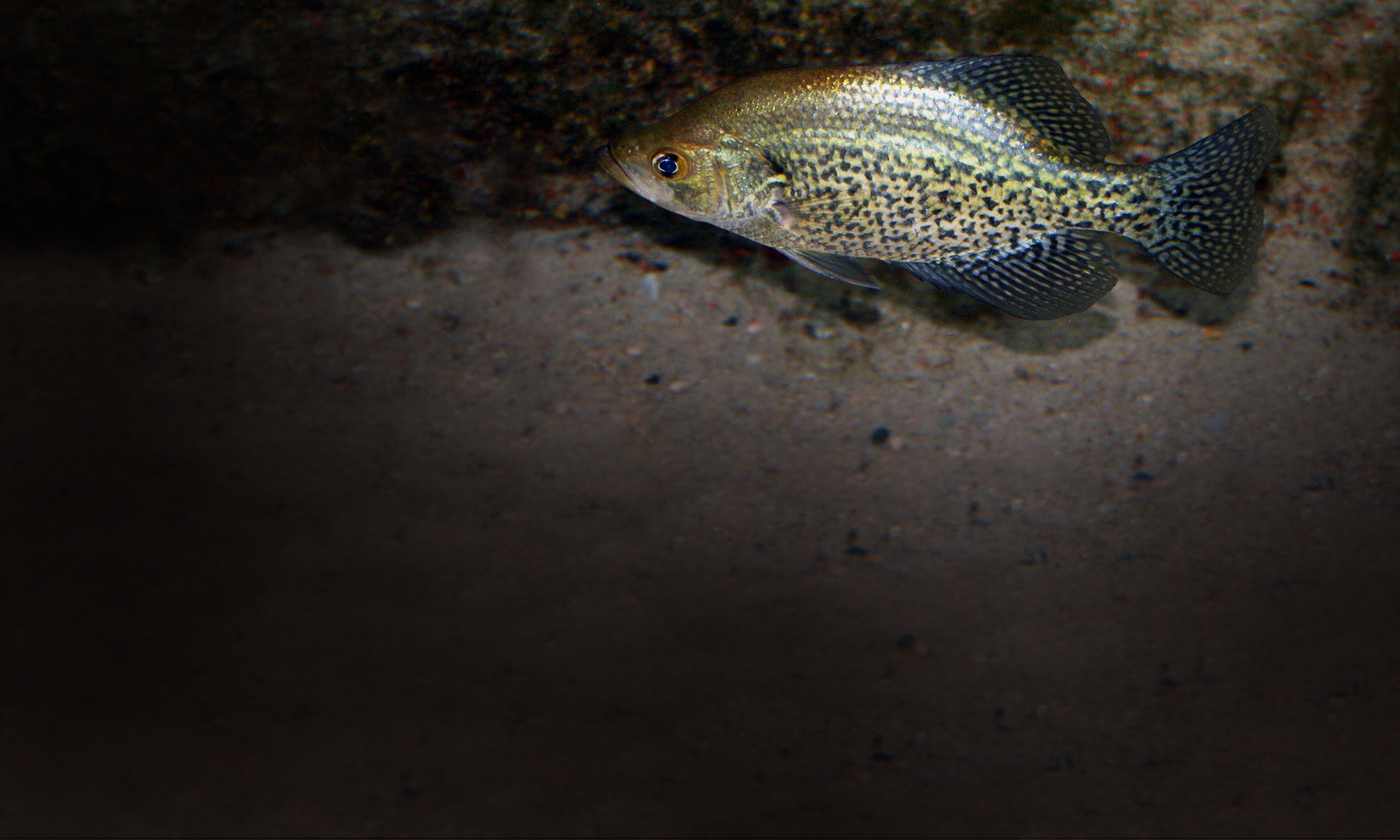Ecomorphological factors in the differential performance of sympatric Pomoxis species (crappie)
Black Crappie Pomoxis nigromaculatus and White Crappie Pomoxis annularis have contrasting patterns of performance along a gradient of turbidity for reasons that have yet to be elucidated. We have been investigating how distinct, habitat-linked morphologies of these congeners make Black Crappie more specialized for structurally complex vegetation and White Crappie more specialized for open-water habitats and testing how these interspecific differences during early life influence their foraging performance and habitat-specific vulnerability to predation.
Longitudinal organization of zooplankton in reservoirs
Unlike natural lakes, the spatial distribution of zooplankton within reservoirs is likely governed by longitudinal changes in environmental and biotic conditions driven by the strong hydrological influence of river inputs. We are quantifying zooplankton, phytoplankton, and turbidity along the longitudinal axis of a large, flood-control reservoir to test the theoretical predictions of the reservoir zonation model and to investigate longitudinal patterns of zooplankton community structure and body size. The distribution of zooplankton and the relative importance of grazing pressure along spatial, environmental gradients within reservoirs would ultimately have consequences for fish distribution and productivity, water quality, and reservoir ecosystem structure and function.
Climate change and reservoir thermal/oxygen structure
Predicting changes in reservoir conditions from climatic warming is hindered by the paucity of long-term data on temperature and thermal and oxygen structure replicated across a range of reservoir sizes. We have been characterizing seasonal patterns in temperature, thermal structure, and dissolved oxygen availability in reservoirs, and evaluating how critical periods for aquatic organisms (i.e., periods of maximum temperature and minimum oxygen) for these features are affected by atmospheric temperature anomalies at different time lags.
Behavioral syndromes in juvenile largemouth bass
Correlated individual differences in behavior, known as behavioral types or behavioral syndromes, are wide-spread and present within a wide variety of taxa. These behaviors generally fall along one of five behavioral axes that include boldness, activity, aggression, sociability, and exploration. We have been investigating how these behavioral types are linked to ecological outcomes, such as diet, habitat use, and the strength of intraspecific competition.
